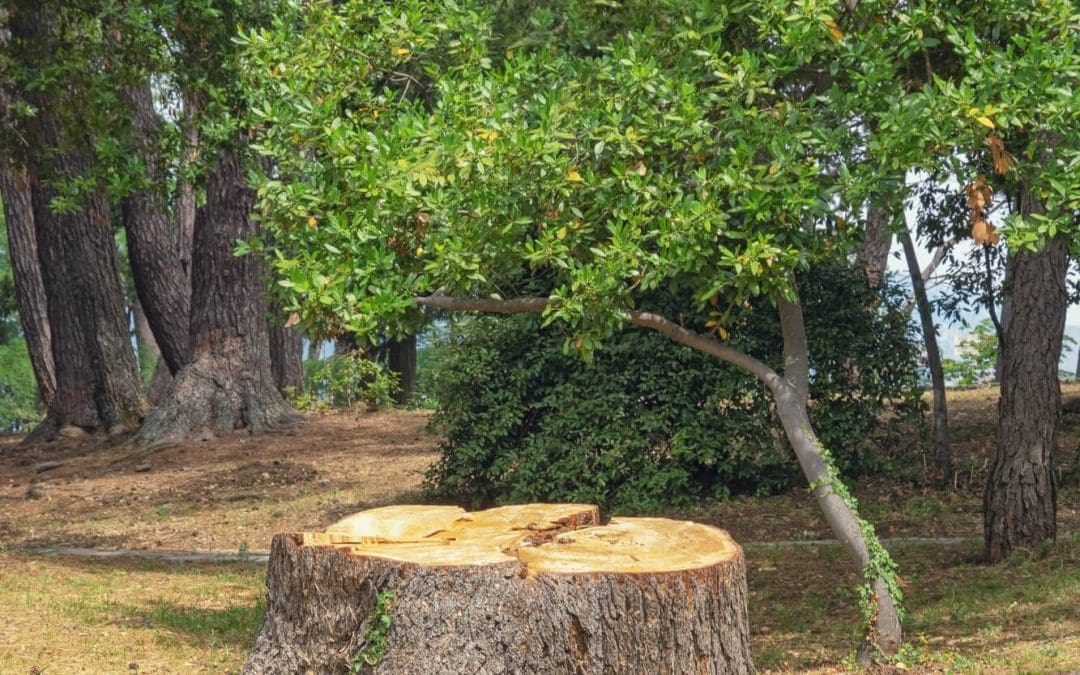Trees add a lot to a yard—they give shade, add beauty, and can even increase your property value. But sometimes, a tree becomes more of a hazard than it’s worth. Knowing when to remove a tree isn’t always easy, especially if you’re attached to it. Here’s how to tell when it might be time to remove a tree from your property.
Remove a Dead or Dying Tree
This one’s the most obvious. If a tree is completely dead, it’s just a matter of time before it starts dropping limbs or falling altogether. Dead trees lose their strength and can’t stand up to strong winds or storms. If the tree isn’t fully dead but looks like it’s struggling—like having large sections of missing bark, bare branches, or no leaves during growing season—it could be dying. A certified arborist can confirm whether it’s too far gone to save.
It’s Causing Structural Damage
Sometimes a tree’s roots grow into places they shouldn’t—like your foundation, driveway, or even plumbing. If you’re seeing cracks in your foundation, buckling in your sidewalk, or constant plumbing issues and there’s a tree close by, that tree could be the culprit. In cases like that, the longer you wait, the more expensive the damage becomes. Removal may be the best long-term solution.
Remove a Tree if It’s Too Close to the House
Trees that are too close to your home can pose all kinds of problems. Branches can scrape your siding or roof, drop leaves that clog your gutters, and even break windows during storms. Plus, roots can grow under your foundation and cause big headaches. If a tree is within 10-15 feet of your home and growing fast, it might be smarter to remove it before it gets any bigger.
It’s Leaning or Has a Weak Structure
A sudden lean in a tree is usually a red flag. If the ground around the base looks cracked or lifted, or if the tree is leaning toward your house, power lines, or anywhere people walk, that’s a serious safety issue. Trees with multiple trunks or big splits in the bark may also be structurally weak and more likely to break apart in a storm. If the tree looks unstable, it’s better not to take the risk.
Storm Damage Has Taken a Toll
After a big storm, it’s common to find trees that are damaged—maybe a few limbs are down, or a large branch has split off. Not all storm-damaged trees need to come down, but if the damage is severe, or if over half the tree’s crown is gone, it may not recover. In those cases, it’s often safer and more cost-effective to remove the tree rather than try to save it.
Get a Professional Opinion
If you’re unsure whether a tree needs to go, the best thing you can do is call a professional. An experienced arborist or tree removal expert can give you solid advice based on the tree’s health, location, and potential risk. A second opinion can give you peace of mind, and might even save a tree that just needs a little care.
Removing a tree isn’t always easy, but sometimes it’s the right move. Whether it’s for safety, damage prevention, or just better use of your space, knowing when to act can save you a lot of trouble down the road.
Cover All Home Inspections offers home inspection services to homeowners and homebuyers in Indiana. Contact us to schedule our services today.
